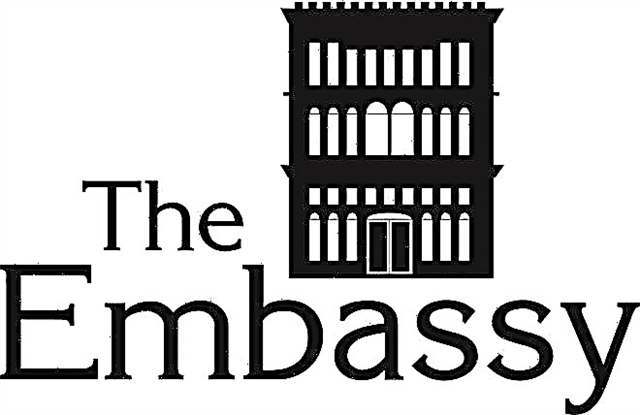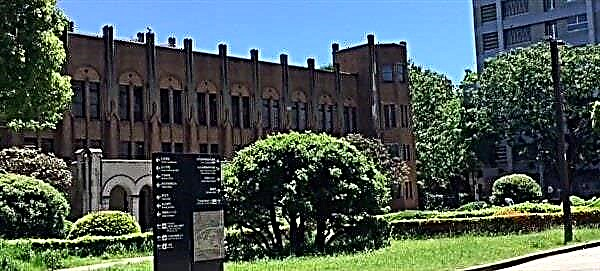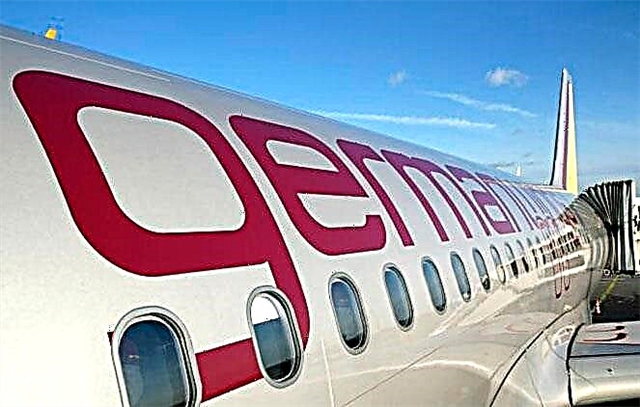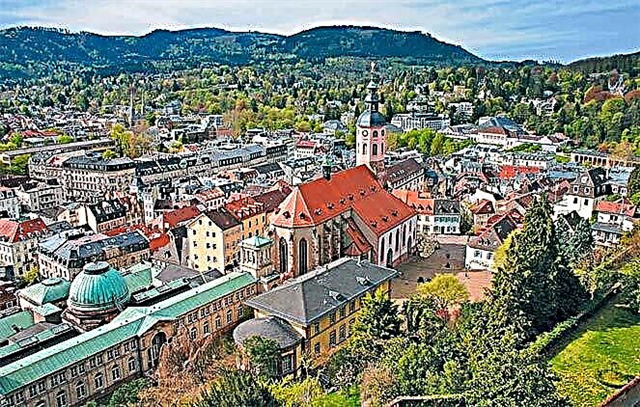Going abroad, it always makes sense to first get acquainted with the available modes of transportation. If hitchhiking is not part of the plans, you should be interested in more convenient options. Transport in Bulgaria is so well developed that there are practically no questions about how, where, where and how to get there. Still, the local transport network is part of the pan-European system, created and functioning according to uniform standards and civilized rules.

General information
The geographical location of Bulgaria on the way from Europe to Asia has historically required great attention to transport. The system of communications has always played a strategic role, ranging from Turkey, which ruled the country for a long time, and ending with the European powers striving to the east.
Given the rich history of development and the small size of the country, public transport in Bulgaria allows you to get from one border to another in a few hours:
- by road and bus communication;
- railway;
- by plane;
- river and sea transport.
Buses, trams and trolleybuses run in Bulgarian cities. Of course, taxi operators work everywhere, and there is even a metro in the capital.
Bulgarian subway
There is a metro in Bulgaria only in the capital. The need was caused by the exhaustion of the capacity of the main routes of ground public transport and environmental problems against the backdrop of a rapid increase in passenger traffic.
Construction began in 1979, and the first line began operating 18 years later ─ in early 1998, and at the time of opening included only five stations. The municipality announced the construction of the second branch at the end of 2008, and two years later the first section was put into operation.
At present, the Sofia metro consists of two lines with a total length of 40 km with 35 stations, the average distance between which is 1000 m. The European standard gauge with a width of 1435 mm is used. All stations are underground.
The platforms are designed to receive six-car trains, the maximum speed of which does not exceed 80 km / h, and the interval of movement varies from 1.5 to 3 minutes. The rolling stock is still exclusively of Soviet and Russian production. The Sofia metro map is shown in the following picture:

According to the general development plan, the construction of the third line started in 2021. After commissioning, the total length of the metro will be 75 km with 69 stations. According to calculations, the Sofia metro will be able to carry up to 1 million passengers daily.
The metro starts operating at 5:00 am and closes at 23:30. The ticket price depends on the number of trips:
- one-way ticket ─ 1.6 leva;
- e-card for 10 trips - BGN 12;
- for 20 single trips ─ 24 BGN;
- for 30 trips ─ 36 leva;
- for 40 trips - 48 BGN;
- for 50 trips ─ 60 BGN.
There are daily passes that cost 4 BGN. Tickets are sold at the entrance to the subway in machines and ticket offices. They are unified ─ allow you to use all types of public transport. The penalty for travel without a ticket is 40 BGN.
More information is available on the official website www.metropolitan.bg.
Bus service
Intercity buses in Bulgaria represent the most convenient way to travel. Most of the park is outdated, but every more or less large city has a bus station with a clear timetable. Travel is relatively comfortable and cheap.
In addition to buses, route taxis have become widespread, following the routes of intercity lines with fewer stops. The fare for any kind is the same and is about 5 euros per 100 km.
City transportation is carried out from 05:45 am to 11:00 pm, as a rule, with an interval of 5-10 minutes. There is a schedule at each stop. Tickets can be bought from the driver or from the machine directly in the cabin. Cost ─ 1 lev. There are also private minibuses. The average fare is 1.5 levs.
The availability of tickets is almost always checked by conductors. A separate ticket is required for luggage (suitcase, large bag).
Modern and comfortable means of transportation can be found only in large cities. There are no air conditioners in buses and minibuses, there are a lot of passengers, so in summer travel conditions are not particularly comfortable.
Bulgarian tram and trolleybus
There is a tram only in the capital, and trolleybuses run not only in Sofia. They are available in 14 Bulgarian cities, including Pleven, Burgas, Varna, Ruse, Vratsa, Stara Zagora, Gabrovo, Dobrich, Haskovo, Pernik, Sliven and Pazardizhik. In the parks there are mainly Bulgarian cars, as well as very comfortable Czech and German cars.
Trolleybuses start at 5 am and end at 24:00, trams an hour later.
Tickets are purchased from drivers or from vending machines located in the salons. They are also sold at newsagents.
Price ─ 1 lev. Composting is required. Children under 6 travel free of charge.
Trains and electric trains
The railways of Bulgaria have a long history and were among the first in Europe. Today, this type of communication connects almost all cities in the country. Trains are quite comfortable and tickets are not too expensive.

Since 2001, the European traffic control system has been used. The busiest train station is Sofiyskiy, and the most popular destinations are to Varna and Burgas.
Managed by the state-owned enterprise "Balgarski d'rzhavni zheleznitsi". The official website of the Bulgarian Railways (www.bdz.bg) allows you to find out about the timetable and purchase electronic tickets for travel online. There is no Russian version, but there is an English version.
There are two types of trains:
- Express (express).
- Passenger (patnically).
The compartments can be double (class I), 4 and 6-seater (class II). There may even be a shower in first grade. We also offer carriages with soft seats of I and II class.
Depending on the class, as well as age and status, passengers are offered several types of tickets (cards) with different travel discounts. Tickets start selling 30 days in advance. Check-in for night trains ends one hour before departure.
Suburban trains in Bulgaria are called "kraigrad patnicheski vlak". Such a message connects the most densely populated areas, major cities and resorts. Passengers are offered passes for the selected route with a validity period of up to three months. Such a travel card costs about 50 euros. Tickets are bought at the box office, from the conductor or on the website.
The inconveniences of this type of transport include frequent delays (up to an hour). In addition, to many small settlements you need to go with transfers.
Aviation
Four international airports - Sofia, Varna, Burgas and Plovdiv - allow you to quickly get to the country from anywhere. The cost of domestic flights is quite affordable: it varies between 60-80 euros one way. In the off-season, promotions are possible, allowing, for example, to get from Sofia to Varna or Burgas twice or three times cheaper.
The schedule for 2021 can be found on the official website of Bulgaria Air (bulgaria-air.esky.bg). You can also book a ticket there.
In summer, the intensity of flights is higher. Up to a dozen flights a day are carried out in the direction of the resorts of Sunny Beach.
Water communication
A ferry has recently appeared in Bulgaria, linking Novorossiysk and Burgas. Ferry "Druzhba" takes on board wagons and cars with drivers, and its cabins are comparable in comfort to the rooms of 4- and 5-star hotels.
Ticket prices start at 120 euros (for children ─ 60 euros). Children under 6 years old are transported free of charge. The "Family" tariff when buying 4 tickets allows you to save up to 15%.
The largest maritime company, Navibilgar, is based in Varna. Services and rates can be found at www.navbul.com.

There is a ferry service with Ilyichevsk and Istanbul. In summer, the Black Sea coast offers short yacht trips and tourist transport on small boats. The cost of the trips depends on the private carriers who do it.
Taxi fleet
Taxis in Bulgaria are easy to find anywhere. There are carriers, both licensed and not. Official cars are painted yellow and have a price list under the glass. All cars have counters, and almost all have cash registers.
You can place an order by phone or via the Internet, specifying the exact address of your destination. There is no single tariff. Each taxi fleet determines the pricing policy independently.
The average cost is:
- boarding (standard rate) ─ about 0.9 leva (from 22:00 to 6:00 - 1 lev);
- 1 km of the way ─ 0.8 leva (at night up to 1 leva);
- waiting time ─ 1 hour costs 13 leva or about 7 euros.
An additional piece of baggage is charged at BGN 5. In tourist-favorite areas, rates are higher (up to 2-4 leva / km) or contractual conditions apply.
Car rental
Those who wish not to depend on the vagaries of public transport have the opportunity to move around in a rented car. The roads in Bulgaria are of high quality and free of charge, and the rules allow driving on highways at speeds up to 140 km / h.
Car rental companies offer services ranging from $ 30-50 per day. The most reliable are:
- Avis (avis.bg, tel. 02-945 9224);
- Europcar (02-931 6000);
- Hertz (02-945 9217);
- Budget (02-937 3388).
You can also use the services of renting an auto-aggregator Myrentacar.
You can find a local offer in the region of 25 leva, excluding petrol. Insurance is included in the price. To use, you need to be 22 years old, 2 years of driving experience and an international driving license.
Urban transport schemes
Of particular interest to tourists are the traffic patterns in the largest Bulgarian cities. Below is a diagram of Sophia.

The scheme of Plovdiv looks like this:

And public transport in Varna is presented in the following diagram.

Main tourist routes
Beautiful nature, good climate, cuisine, traditions and ancient history of Bulgaria attract tourists both in summer and in winter. There are a lot of tourist routes in the country. Both land and sea.
For example, from St. Vlas, sea taxis to Nessebar depart daily from 9:00 to 19:00 every hour from the central pier. The ticket price is only 15 leva. This is a wonderful boat trip.
The medieval capital of Veliko Tarnovo, the capital of humor Gabrovo, the Vanga house-museum in Rupite or the town of Kazanlak, where a magnificent celebration is held in honor of the country's symbol - the rose - is held by thousands of people every year.
Of course, Russian travelers are more interested in a beach holiday. Traveling from Sofia to Burgas by train will allow you to get to the most popular resorts. Excursions in old Varna are accompanied by wine tasting and a visit to the ethnographic settlement of Bata. By the way, the city has the largest steel bridge in Europe and the third largest Roman baths in the world.
It is good to combine beach pleasures with excursions to Sozopol - the most ancient Greek colony on the Black Sea, or to Nessebar ─ one of the oldest cities in Europe, which grew up on the well-preserved ruins of an ancient Thracian settlement. Walking open steam train Sunny Beach - Nessebar takes 20 minutes. A ticket for it costs 3 levs (for a child ─ 1 lev).
Conclusion
The level of transport connections in Bulgaria is higher than one would expect. The metro and tram are available only in the capital, trolleybuses - in many large cities. You can get from city to city by trains (express or passenger), buses or minibuses. Funiculars are not uncommon in Bulgaria, you can rent a bike or walk for walks.











